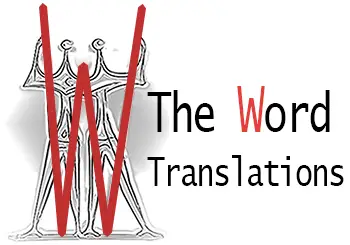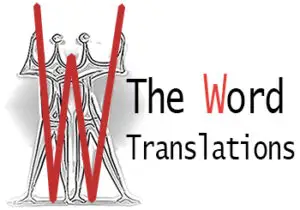According to the Portuguese dictionary, the verb “to translate”, or the “act of translating”, is to pass a text, written or audiovisual-based, from one language to another.
However, between the “act of translating” according to the above definition and the “translation as it is in practice”, there are a lot of approaches to the translation process that go totally unnoticed by consumers. For these, what matters is to have access to texts and audiovisual productions (films, series, internet videos, etc.) in their own language, wishing that these products had been well adapted. They expect that the publishers and distributors of these productions hire professional translators who are committed to reducing the “echoes” or “noises” of language transposition.
For translators, though, in addition to providing faithful-to-the-original translations, there is the concern of delivering translations that may sound as natural as possible, something like saying that “a text is so well rewritten in the target language that seems to have been written directly in that language”. And this is truly an art!
Translation is the art of rewriting, in another language, texts and dialogues, cultural references, jokes and puns, verses and rhymes, keeping the author’s own style and the rhythm of the text! And it is even more complicated when you consider the translation for dubbing, in which there is also the need to synchronize specific lip movements.
A good translation doesn’t happen by chance. It is, rather, the combination of the careful analysis of the original text, the use of translation strategies (some of them more intuitive than others), the way to express the message in the target language and, above anything else, the translator assigned for the task – a professional one, with attitude, curiosity and creativity to find & offer the best linguistic solutions, ever.
And there are always those who state out loud that translation is merely a matter to use Google translator!
We bring here, a brief explanation of some of the strategies used by translators to make the foreign text not only faithfully translated (in terms of message and style), but fluid, coherent and enjoyable to read (or watch, in the case of audiovisual translation).
Since the second half of the last century, applied linguistics professionals have been studying the translation process and organising approaches that can be used to deliver quality texts in the target language.
There are several strategies that translators use to ensure translation quality; These approaches may vary from the simple literal translation of the text until its complete restructuration.
And which strategy to choose?
Well, it depends on varied factors as the context, the type of text, personal style, cultural adaptation, other particular needs of the target audience, among others. And rather than choosing a single way of translating, what happens most the time is a combination of approaches.
Translation strategies
Direct or indirect translation
First of all, it’s important to understand when a translation is direct or indirect.
Direct translation: it is used when all the elements and structures of the original text remain in the translated version; the message can be adapted to the target language without extensive changes in the dynamics of the text
Indirect translation: occurs when both sentence structure and lexical categories are altered. Here, it is essential to count with the assistance of a professional with in-depth knowledge of the translation process.
Within these subcategories, we may have different approaches to the translation process.
In direct translation, we have:
1. Literal translation
There are situations in which literal, word-for-word translations are sufficient or even the only suitable possibility to translate; this is the case of slogans, short sentences either without context or major implications in other parts of the text.
Some examples of the application of literal translation:
– Legal documents: in contracts, agreements, laws and other legal documents, it is common to use literal translations to ensure that terms and clauses are translated accurately.
– Technical materials: in instruction manuals, technical guides or specification documents, literal translation is applied to maintain the accuracy of technical details.
– Scientific documents: in scientific publications, research and technical articles, literal translation can be used to maintain specific terminology and technical concepts.
– Machine translation: most of the machine translation tools available on the market are algorithms based on language models where literal translation is most commonly used because it is more straightforward and easier to implement. The pros and cons of using automatic translations are many and will be covered in another post.
It is important to remember that even in situations where literal translation is useful, a careful analysis must be taken to ensure that the message is correctly conveyed in the target language. Literal translation does not always result in an understandable message or sounds a natural sentence in the target language, so in many cases it is advisable to use more adaptive and contextualised translation techniques or, best of all, a combination of techniques and approaches.
This is particularly evident in audiovisual translation, especially for dubbed videos, when the literal translation may seem “stiff”, with unrealistic and often meaningless dialogues.
2. Borrowing/loan translation (calque)
Loan translation, also known as calque or linguistic borrowing, occurs when a language adopts a word or expression from the foreign language due to the lack of an equivalent term in the target language, or because the foreign word or expression is considered more precise, elegant or relevant to the situation.
In these cases, it is normal to use this foreign term either “Portuguese-like”, straight from the original, as in the case of “hamburger” (from German), “kimono” (from Japanese), “deletar” (from English) or baguette (from French); or adapted, as in the case of expressions like “skyscraper” (from English skyscraper).
There are several situations in which loan translations are common:
– Technical and scientific terms: Technical words and phrases are often borrowed from other languages, especially from English, due to its prevalence in fields such as technology, medicine, science and business. For example, in Brazil we use the word “software” as it is in English, instead of creating an equivalent term.
– Slangs and pop culture: Expressions from popular culture, such as band names, movie characters or TV shows, can be borrowed directly from other languages. For example, in many languages you may hear references to “rock and roll” or “hip-hop”.
– Terms that describe unique concepts: Some languages borrow words or expressions from other languages to describe concepts that have no direct equivalent in their own language. For example, in Portuguese, we use the word “saudade” to describe a feeling of deep nostalgia, which is not easily translated into many other languages. We have an interesting publication about untranslatable terms, which you can see here.
– Technological innovations: New technologies often bring with them terms that are borrowed from other languages. For example, the term “e-mail” is a borrowed from English and is used widely in many languages.
– Words of foreign origin that become part of the language: Sometimes borrowed words or expressions become so common and integrated into the language that they are considered part of the native vocabulary. This can happen over time, as any and every languages evolve. In Brazil we use the verb “deletar” as if it had always been a Portuguese term, almost forgetting that it is, indeed, an incorporated term from the English verb “to delete”.
Borrowing can be an effective way of dealing with linguistic gaps, but it can also affect cultural identity and, even more so, it can influence the language itself, as it introduces elements from foreign languages into the mix. Therefore, its use should be balanced and considered carefully, especially in formal or academic contexts.

In indirect translation, we have the techniques:
1. Translation by equivalence or reformulation
Imagine the difficulty of translating the scripts (for dubbing) of a show that is set in a penitentiary, as it is in the case of “Orange is the new black”.
They not only bring different language styles, level of register and specific vocabulary, all of these quite far from formal the grammatical norms, but there is also a huge amount of slang, jargon and idioms incorporated into speech, which can hardly be translated literally into foreign languages. If literally translated, such expressions simply wouldn’t make any sense.
Thus, localising content like this involves adapting the text (speech) within the specific context for the target language.
Although translation by equivalence is a common approach to translation, it is important to remember that it is not always possible to find an exact match for every word or expression in another language and that certain nuances, puns or cultural references can be lost. When there is a relevant loss is content and it is fundamental to the unfolding of the story, a brief footnote explanation can be inserted, as we will see below, which is obviously not possible for audiovisual productions.
Besides its use on the adaptation of audiovisual content (dubbing), translation by equivalence is also applied in other general contexts, such as translation of literary texts, commercial documents, websites, advertising and marketing materials.

2. Translation by transposition
It is a technique that involves rearranging words, phrases or parts of an original text before translating it into another language. Instead of translating word by word in the original order, the translator reorganises the structure of the original text to make it more understandable and natural in the target language.
This technique is often used when the grammatical structure, syntax or word order in one language is very different from that in another. Transposition can help preserve the meaning of the original text and make it more fluid and readable in the target language.
Use of transposition:
– Changing the order of words: In some languages, the order of words in a sentence can be different from that in another language. A translator can rearrange the words to reflect the used grammatical order in the target language.
If we analyse the German or the Chinese linguistic structure, for example, quite different from the Romance languages, in which the verbs appear at the end of sentences, we realise that the transposition of words seems to be a simple routine.
– Reorganisation of phrases or clauses: To improve fluidity and comprehension, a translator can rearrange phrases or clauses in an order that makes more sense in the target language.
Source text (advertising slogan): “Impossible is nothing”, translated as “Nothing is impossible.”
In this example, the translator inverts the slogan while keeping the essential meaning, but adapting it in a more impactful way in the target language.
– Change of voice: The passive voice in one language may be used more often than in another. In this case, the translator can transpose a sentence from the passive to the active voice (or vice versa) to maintain clarity.
This is a valuable technique when dealing with languages that differ significantly in terms of linguistic structure. However, it requires solid skills in understanding and recreating grammatical and syntactical structures, with care taken to ensure that the original meaning of the text is retained after translation.
3. Translation by reduction (synthesis) or expansion (amplification)
These are techniques used to adjust the size and content of a text according to the conventions and limitations of the target language. These techniques are particularly useful when the target language has significant differences in terms of conciseness compared to the source language.
Reduction Translation is often used when the source language tends to be more descriptive or verbose than the target language. The aim is to maintain the essence and meaning of the original text, but in a more compact format.
Example:
In English: “The company is planning to implement a new policy with the goal of increasing productivity.”
Translated into Spanish: “La empresa planea implementar una nueva política para aumentar la productividad.”
In this example, the Spanish translation is more concise, eliminating the repetition of “with the aim of” in the original English text.
Expansion Translation, on the other hand, involves augmenting the original text to make it more complete and detailed in the target language. The translator can add information, examples, explanations or details that were not present in the original text.
Example:
From Portuguese: “O rio Amazonas é o mais extenso e volumoso do mundo.”
Translated to English: “The Amazon River, which is the longest and most voluminous river in the world, …”
In this example, the English translation adds descriptive information (“which is the longest and most voluminous river in the world”) to provide more details about the Amazon River.
4. Translation by explanation
In some cases, certain words, idioms or cultural references may not have a direct equivalence in the target language. In such cases, the translator may choose to provide a literal translation in the body text and add a more detailed explanation in a footnote (the famous “translator’s note”), to make the meaning more understandable.
This approach allows the translator to communicate more accurate information and avoid misunderstandings or misinterpretations, even if it requires a bit more text or effort to explain the original concept.
This is common when translating technical texts, jargon or cultural concepts that may be unfamiliar to readers of the target language. However, it is important to balance the need for further explanation with the fluidity and naturalness of the translated text, so that the reading remains enjoyable for the reader, without so many interruptions.
5. Translation and cultural adaptation
More than a technique, here we bring you useful practices in day-to-day translation.
Cultural adaptation is replacing elements of the original text that are not part of the cultural context of the target country; this can be done by replacing it with something equivalent, or even by rewriting the passage so that it is understandable and appropriate in the target language.
Some situations in which cultural adaptation is relevant in translation:
– Cultural and Geographical Context: When a cultural or geographical reference in the original text is not understood by the target audience, the translator can replace it with something equivalent in the target culture. This can include the names of celebrities, places, historical events or references to local customs.
– Measures and Currencies: Scales, units of measurement and currencies must be adapted to the references of the destination country. For example, in texts that show weight measurements in stones (UK), the translation into Brazilian Portuguese will show the measurement in kilos.
– Cultural sensitivity: Certain topics may be sensitive or offensive in one culture, but not in another. The translator needs to be culturally sensitive in order to adapt the content according to the norms and values of the target culture.
In short, cultural adaptation in translation involves more than just converting words from one language to another. It encompasses a deep understanding of cultural differences and the ability to adjust content so that it is clear to the target audience in the new culture.
And when translation does not seem to be enough? When do you need to change the text in such a way that it doesn’t bear much resemblance to the original? These are the cases in which the translation of the idea takes precedence over the translation of the text itself; here, there is translation combined with creation, the so-called transcreation or creative translation.
Translation by transcreation
Often, literal translations or small adaptations to the translation of the text will be enough to express the idea, while maintaining the cohesion and clarity of the translated version. However, in other situations, adaptations need to be more incisive, or they can generate texts that are completely different from what a literal translation would be. These are the cases in which the translation is combined with the recreation of parts of the text in the target language, known as transcreation (or creative translation).
Transcreation is a form of “translation by adaptation” and many translators, in fact, argue that they are the same thing. We have left it as a separate category due to the extent of creation, not translation, in transcreated video texts/scripts to be greater when compared to what would be a literal translation of the same content.
In transcreation, the translator seeks to maintain the message, essence, style and emotion of the original text, even if this means making significant changes to the text structure in the target language. In these cases, the biggest challenge for translators and proofreaders is to balance freedom of creation with respect for the original text.
This method is often used in translations of literary works, advertising, slogans or creative texts that require a more artistic and interpretative approach.
Examples:
From the English: “Break a leg!”, we have the Portuguese translation as “Good luck!” (“Boa sorte!”)
Explanation: The idiomatic expression “Break a leg!” is commonly used in English to wish good luck before a theatrical performance, however, the literal translation would not make sense in many other languages, nor in Portuguese. Therefore, the translator opts for a culturally relevant adaptation, such as “Good luck!”.
This challenge has been well explained by Professor D`Hulst in his book “Cent ans de théorie française de la traduction”:
There is nothing more difficult (...) and nothing more rare than an excellent translation, because nothing is more difficult or more rare than to achieve the right balance between the license of the commentary and the servitude to the text. Excessive attachment to the text destroys the spirit, when it is the spirit that vivifies; excessive freedom destroys the characteristic features of the original message and makes it an unfaithful copy."
Lieven D'Hulst Tweet
And how do we know which strategy to adopt?
Always remember, translators, there is not just one approach, one strategy, one translation. It is often necessary to combine different strategies to ensure that the translation is accurate, fluent and culturally appropriate. Each text presents unique challenges and we need to consider the term-text-context trinomial to inform our choice.
But, after all, what is considered a well-done translation?
When opening a book or choosing a movie on a streaming platform, the consumer is not very interested in discussing what strategies were used by the translator in adapting the work. He simply wants to enjoy the translated work and hopes, above all, that this adaptation has been done well.
But the translation errors, when detected, seem to jump out of the pages or the video, and almost hurt our ears, our sensibilities! How many times has this happened to you? Yes, it does.
What translators strive to deliver:
The golden dream of every translator is to always deliver work with:
- Fidelity to the original text:
Yes, the basic point is to ensure that the translated text is faithful to the original. If it is practically impossible not to interfere with the original content, the aim is to convey the author’s message without adding your own ideas or opinions. In this way, the translator enables readers to have an experience as close as possible to the one they would have had reading the original text.
- Respect the style of the original text:
Respect for the author’s original work, allowing their voice and style to remain present in the translation. This is particularly important when it comes to literary works or texts with a distinct authorial voice. A skilled translator works behind the scenes to ensure that the author is adequately represented in the target language.
- Fluency, elegance and natural style:
We strive to create a translated text that develops smoothly and naturally in the target language, always closely following the original text. That way, the reader can focus on the content and the message, rather than being distracted by a clumsy, mutilating translation.
- Respect for the cultural limitations of the target audience:
The translator needs to be culturally sensitive to adapt the content according to the norms and values of the target culture, avoiding sensitive or offensive topics. This is usually requested by the client themselves, but it never hurts to remind the professional directly.
Translations like this bring writers/content producers closer to their consumers, shorten cultural distances and extend the reach of productions to many other markets.
This is our goal at The Word Translations.
Want to know more about our services? Contact us and let’s work together!




